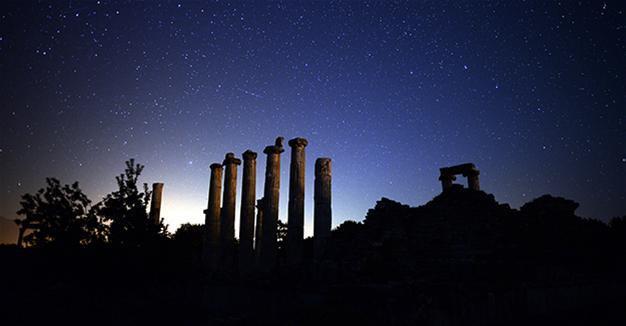UNESCO inscribes Turkey’s Aphrodisias as a world heritage site
ANKARA

The UNESCO World Heritage Committee has inscribed the “Aphrodisias Archaeological Site” on the UNESCO World Heritage List upon Turkey’s nomination, the Foreign Ministry said in a written statement on July 10.
Aphrodisias, located in the western province of Aydın, has been on Turkey’s World Heritage Tentative List since 2009 and is one of the most important archaeological sites in the country, as a unique archaeological heritage with well-preserved sculptures, monuments, inscriptions, structures and marble quarries.
The site was included on the world heritage list during the 41st UNESCO World Heritage Committee session in Krakow, Poland, the ministry stated.
Located in southwestern Turkey, in the upper valley of the Morsynus River, the site consists of two components: The archaeological site of Aphrodisias and the marble quarries northeast of the city. The temple of Aphrodite dates from the 3rd century BCE and the city was built one century later. The wealth of Aphrodisias came from the marble quarries and the art produced by its sculptors. The city streets are arranged around several large civic structures, which include temples, a theater, an agora, and two bath complexes.
“As a result of the intense efforts by the Ministry of Culture and Tourism, the Turkish National Commission for UNESCO and the Ministry of Foreign Affairs, with the adoption of this decision, the number of inscribed properties of Turkey on the UNESCO World Heritage List has increased to 17,” the ministry stated.
The discovery of Aphrodisias dates back to 1958, when a magazine sent legendary photographer Ara Güler, dubbed “The Eye of Istanbul,” to document the opening of the Kemer Dam in the Aydın province. On the way back, his driver got lost, resulting in the discovery of Aphrodisias, the ancient cult center devoted to the goddess Aphrodite.
When Güler returned to Istanbul, he sent the images to the Architectural Review, and soon received a telegram from Horizon magazine requesting color photos and an article to go alongside the photo essay. Güler suggested New York University Professor Kenan Erim to pen the article. Erim accepted the commission and went on to devote his life to excavating Aphrodisias.
In a statement on July 9, the Culture and Tourism Ministry said Turkey would nominate the Göbeklitepe Archeological Site to run in 2018. Located close to the Örencik neighborhood, 18 kilometers from the southeastern province of Şanlıurfa, Göbeklitepe was first discovered in 1963 during surface survey of researchers from Istanbul University and the University of Chicago. Works have been continuing at the ancient settlement for 54 years.
 The UNESCO World Heritage Committee has inscribed the “Aphrodisias Archaeological Site” on the UNESCO World Heritage List upon Turkey’s nomination, the Foreign Ministry said in a written statement on July 10.
The UNESCO World Heritage Committee has inscribed the “Aphrodisias Archaeological Site” on the UNESCO World Heritage List upon Turkey’s nomination, the Foreign Ministry said in a written statement on July 10.